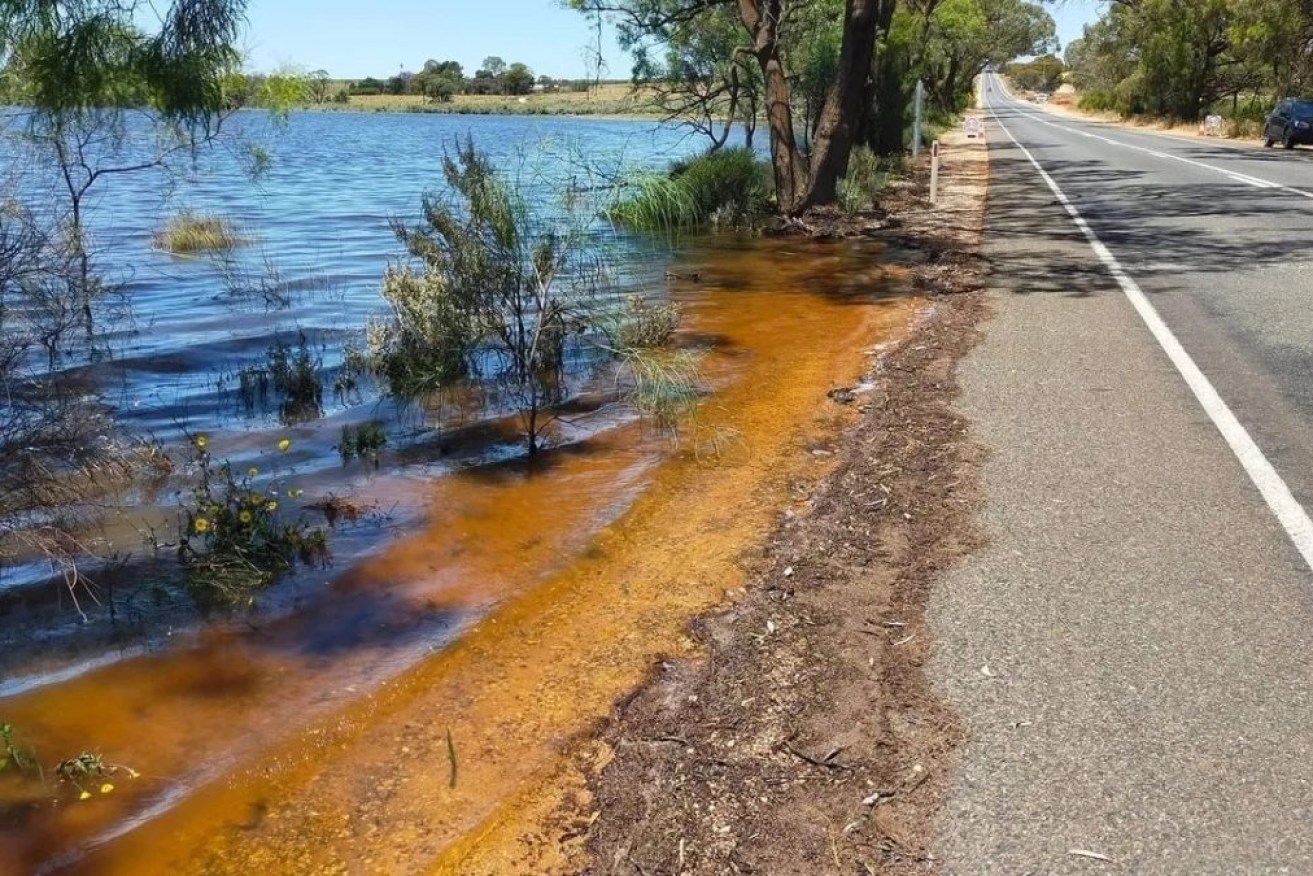River Murray levee breaches continue as floodwaters intensify
Eight levees have suffered “catastrophic” failures along the River Murray with serious defects identified in a further 53, the State Emergency Service reports, as water continues to surge down the river ahead of peak flooding expected to begin later this month.

The Moorook to Kingston road closed this morning. Photo Facebook
SES chief officer Chris Beattie said most of the levees to suffer major issues had been constructed privately and were in “low-lying agricultural” areas.
“We’ve had a number of minor levees fail catastrophically or breach over the last week, seems like it’s almost one a day at this stage,” Beattie told reporters on Monday.
“We’ve got about eight levees that have had catastrophic failures, so they’ve been breached in their entirety, can’t be repaired.
“We’ve got around 53 levees where there have been serious defects that we’ve got our engineers to have a look at and we’re actively working on a number of very large structures, including at Cobdogla, to try and affect some repairs there.”
Beattie also said some leaks had been spotted in a levee helping to protect Renmark Hospital and work was underway to ensure more serious issues did not develop.
There were no concerns about the levee’s overall integrity.
A levee at Ponde in the Murraylands also failed on Saturday, isolating about six properties.
Beattie said repairs were being made where possible and checks on all levees would continue.
“By and large we’re very pleased with the way that patrolling and monitoring program is going and the responsiveness with getting contractors on site,” he said.
Liberal MP for Hammond Adrian Pederick said residents need to be prepared for levee banks to breach if they are only designed to take 180 gigalitres of water.
“Most of the agricultural banks and some of the government banks were only rated at 180 gigalitres a day, and we certainly have seen some breaching,” he told ABC Radio Adelaide today.
“The reality that people need to understand is that these flood plains will become inundated when these banks are only 180 gigalitres.
“There’s a lot of water coming and people need to put their preparations in place.”
Pederick noted that other levees further downstream at Jervois were rated much higher at around 240 to 250 to gigalitres.
Meanwhile, Premier Peter Malinauskas says a levee issue at Lake Victoria in southwestern New South Wales has been addressed.
The SES had flagged on Thursday that if the NSW levee could not be repaired, an extra 10 gigalitres could flow through to South Australia.
“The good news is the Lake Victoria issue has been addressed in the context of being able to maintain the security of storage,” Malinauskas told reporters on Monday.
“But in terms of being able to use Lake Victoria to take off some of the flows that are coming down to mitigate the peak, that will not be an option.
“In terms of what that means along the river on our side of the border, it means that there will be a marginal difference in terms of the volume of water coming down.
“But the advice that I’ve received in terms of its impact on a community level, it will be largely negligible.”
Daily peak flows are still forecast between 190 and 220 gigalitres but then expected to drop back to about 150GL by February, allowing clean-up work to begin.
In the latest series of warnings, watch and act messages are in place for low-lying areas at Tailem Bend and Murray Bridge where some residents could expect to be flooded or isolated.
About 4000 properties across the length of the Murray in SA are expected to be inundated with more than 1100 flooded so far.
The high-water mark is likely to hit Renmark, near the Victorian border around Boxing Day and then reach Murray Bridge by January 17.
On Monday, the state government started rolling out business support grants with $600,000 approved so far for those companies forced to close.
The grants are part of a wider $51.6 million assistance package, including direct emergency payments to home owners.
Malinauskas said the state government would consider fuel subsidies or other ways to alleviate transport issues for River Murray communities, amid ongoing road and ferry closures.
“Without wanting to unreasonably inflate people’s expectations, I guess we’ve got a consciousness of the travel difficulties that many families and business owners have to confront in the context of ferry closures,” he told reporters on Monday.
“That’s something we are turning our minds to, particularly seeing how the grants roll out in other circumstances.
“There may be reason to make adjustments as the event unfolds, and that’s something we’ll be actively considering right throughout the Christmas/New Year period.”
-With AAP




